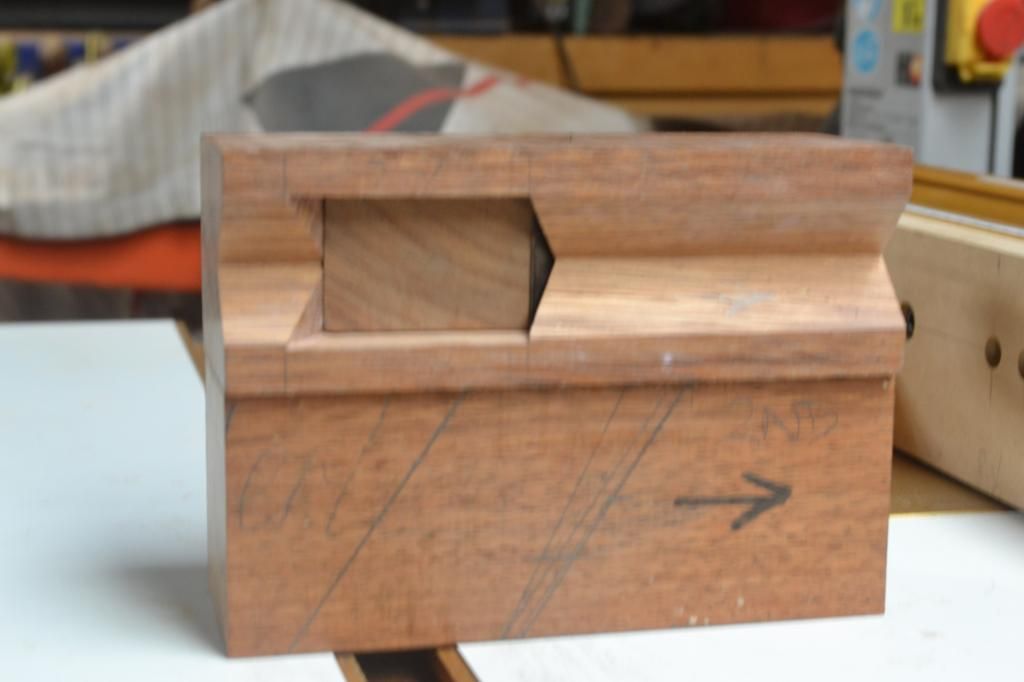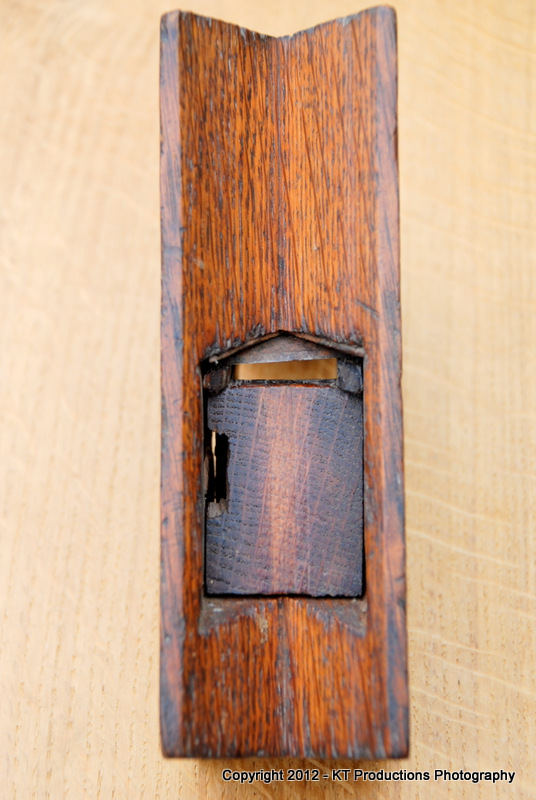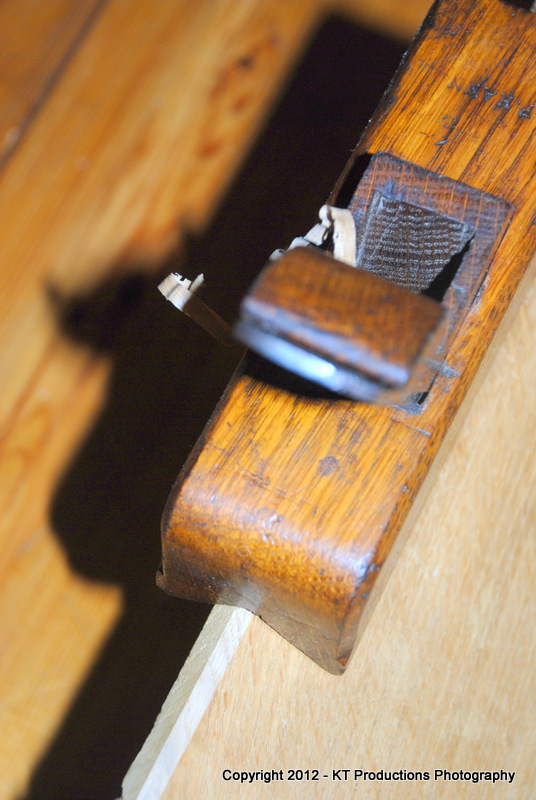An opportunity for further discussion and feedback.
To create a good chamfered edge of equal proportion along the full length a basic requirement is that the full length of the hand planes sole needs to remain in good contact with the edge being worked. By doing so your able to keep the cutting edge of the iron at a constant depth of cut.
Now lets look at the basic set up of the boxed chamfer plane.

You will note that the length of the stop at its base only represents about 1/3rd of the soles total length.
When the base of the stop is set at or above the top point of the planes V sole the edge of the board is able to make contact along the full length of the sole.
As this base is then moved down to a level below the top point of the V sole the boards edge now only rests on the stops base. 1/3rd the total length of the sole.
This creates an unhealthy condition where the plane is now able to rock forward or back as its moved along cutting the chamfered edge.
The most prominent areas of this rocking motion being the very start of the chamfer or the very end of the chamfer. Noticeable by resulting overcut.
Those that have used a boxed chamfer plane in the past will be aware of what I am talking about.
Its relevant to note that the further the base is set below the top point of the V sole the greater the level of rocking achievable.
Now. A possible solution.
Instead of moving the stop to change the width of chamfer why not keep the stop set at the same height as the top point of the V sole and just adjust the cutting edge incrementally lower to control the width of chamfer.
By my calculations if a 12mm chamfer was the maximum requirement needed then that would see the cutting edge at around 5mm below the top point of the V.
At that depth of set the back of the iron is still well seated within its bed, allowing such issues as chattering to still be avoided.
As an added benefit the sides of the boards edge being chamfered are also making full contact with the sides of the V sole which will add even great value to the stability of the plane during chamfering.
What I am suggesting may sound a slightly unconventional approach to those that are traditionalists at heart but if can have a some bearing on the consistent quality of the final chamfers outcome and make it much easier for the user to control the plane's movement then I think its a worthy consideration to take on board.
Now its over to you guys for your thoughts and feedback.
Stewie;





































